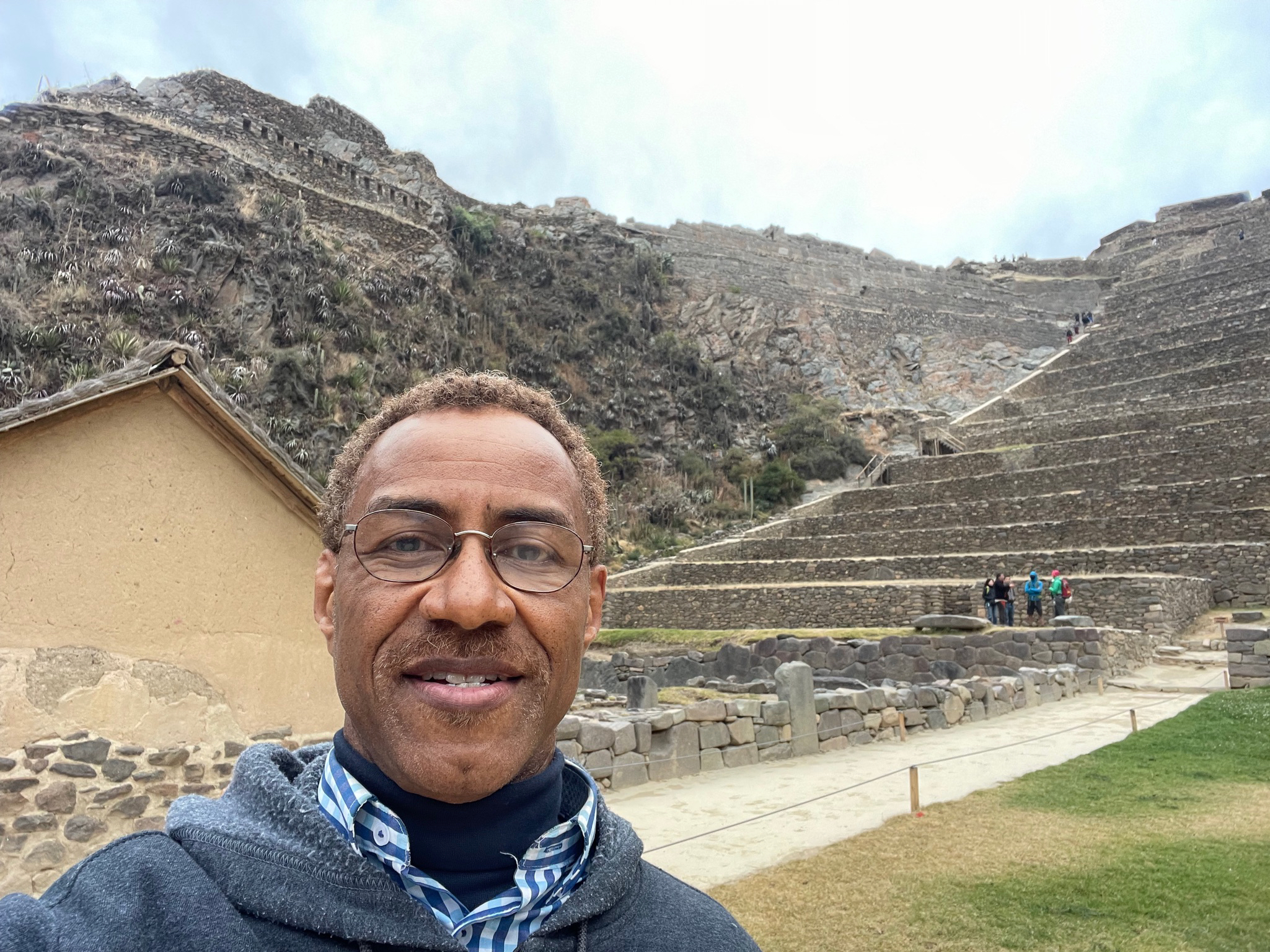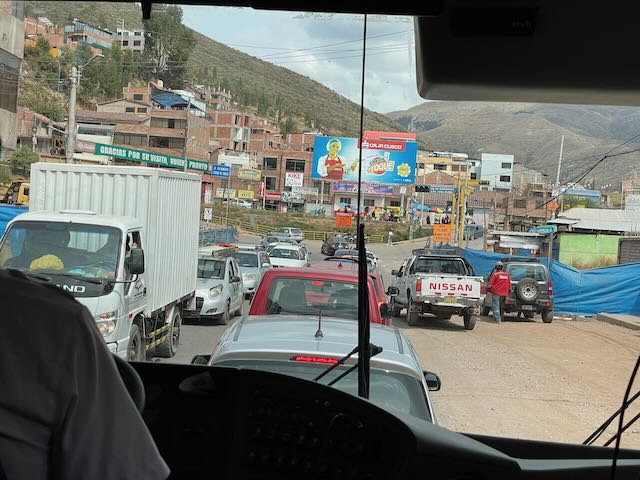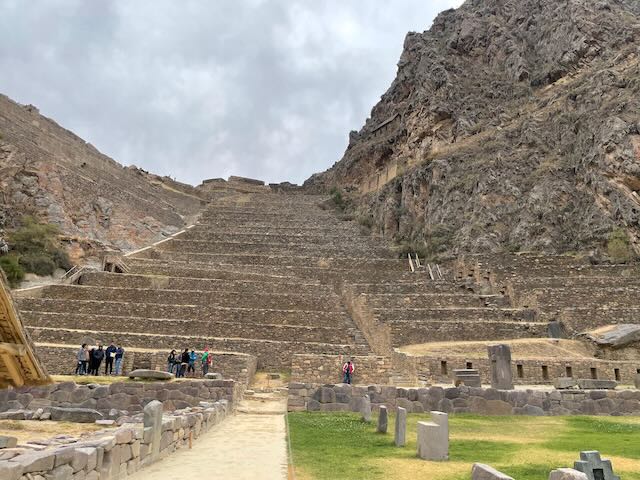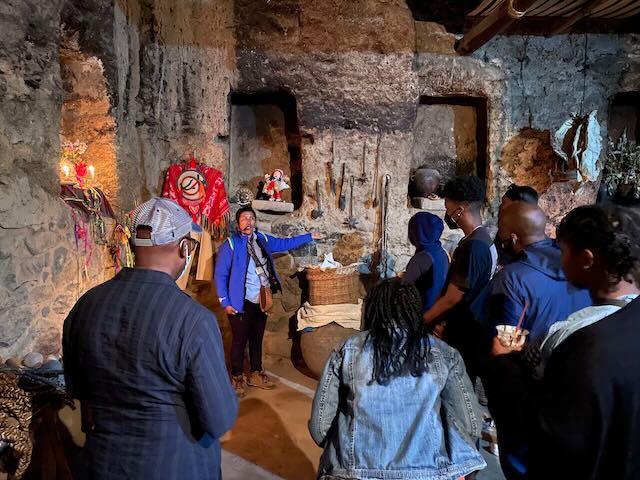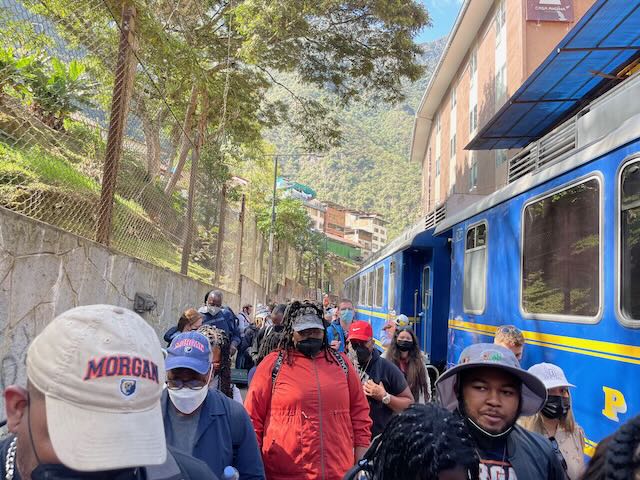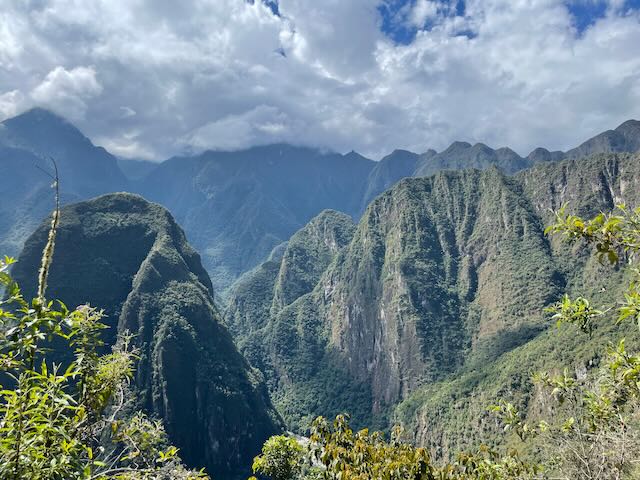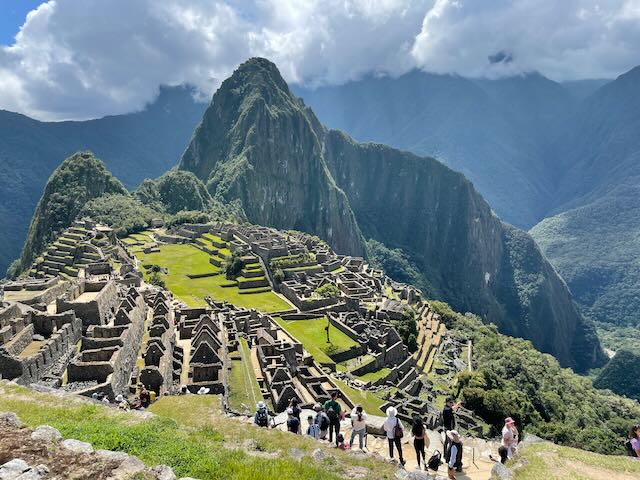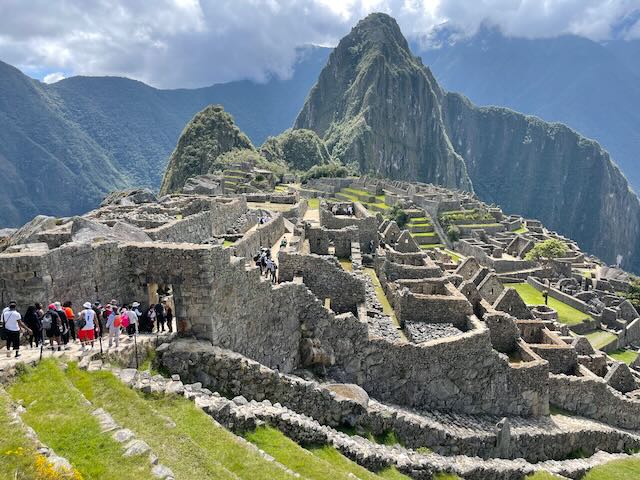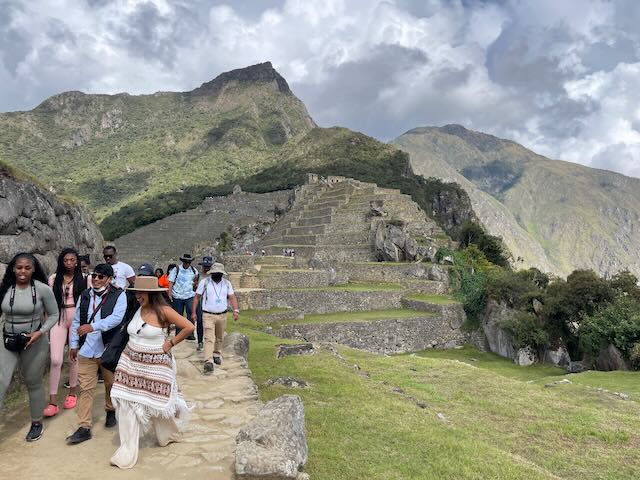High Altitudes (Days 3 and 4)
After our first days in Lima, we flew to Cusco, Peru. This city is known for once being the capital of the Incan Empire. Cusco is situated along the Andes mountains of South America. Negotiating around the mountains meant more turbulence than normal for flights. The only concern that I had for this tour was the high altitude of this region and how the Morgan choir members would react. Cusco is 11,150 feet above sea level, which is over a mile higher than Denver. Upon arrival, many could immediately feel the effects. The Cusco airport was one of the smallest I have seen, with only a few gates for incoming planes. After carrying their bags, several students were winded and began to slow down.
The main site for Wednesday’s itinerary was the Sacred Valley, an area known for its fertile soil. Travel to this region by bus should not be taken lightly as most roads were not made for motorized vehicles. Made of cobblestone or dirt and no wider than one lane, the roads caused vehicles to constantly slow down to allow safe passage. We were captivated by the beauty of the Andes mountains. As we descended into the Sacred Valley, we were able to see the beauty of the region. It looked as serene as it must have been over two thousand years ago. We had a group lunch, buffet style, featuring many cuisines from the region.
Our next stop for the day was the Incan archaeological site of Ollantaytambo, a royal estate of the Incan emperor PachacutI, from the mid-15th century. This site is famous for its strength as a fortress and high points above the entrance used for offensive maneuvers. It is also the location where the Incans won one of the few battles against the Spaniards. While at the complex we visited a typical Incan house that is still used today.
After a day of travel and sightseeing, the group stayed in a beautifully rustic hotel located in the Sacred Valley. Due to the altitude, the temperature of the area in the evenings is around 45-degrees Fahrenheit. Following three days of constant travel, the group slept extremely well.
On Thursday morning, the fourth day of our trip, we woke early to take a train to Machu Picchu. While we were eating breakfast, around 7 a.m., we were surprised to feel the tremors of an earthquake. We were told that the area experienced an earthquake measuring a magnitude of 6.9! Our guide mentioned that earthquakes are common in this region. However, due to climate change, they have been occurring more frequently. Nothing like a little more excitement added to a tour!
Machu Picchu, is one of the most visited sites in world. Considered one of the seven wonders of the World, Machu Picchu is in the mountains above the Sacred Valley. It is believed that Machu Picchu was constructed by Emperor Pachacuti as a retreat estate.
Between 1438 to 1533, the Incan Empire was considered to be at its largest. During this time it encompassed Columbia, Peru, Bolivia, Ecuador, and Chile. After taking an hour- and-a-half ride to Agua Calientes, the town below Machu Picchu, we then took a treacherous 30-minute bus ride on a one lane dirt road on the side of a mountain. There was barely enough room on much of the road to allow the passage of two buses. Often, we were only feet from a precipitous cliff, which was skillfully navigated by our driver.
Since it was rather cool in our hotel that morning, many wore jackets and sweaters. However, when we arrived at the top of the bus trail, we were met with penetrating heat, in part because we were so high. Although we were warned to wear lotion, sunscreen, and bug spray while we were in the Machu Picchu complex, many did not believe these admonitions. Upon arrival, we were met with penetrating heat and sun.
We then had a 45-minute walk to the Machu Picchu complex, which was very challenging to navigate, especially given the high altitude. Our guide told us that Machu Picchu is situated in the very beginning of the Amazon jungle, thus the reason for bug spray. One of the reasons it is considered one of the seven wonders of the world is because historians have tried to understand how this residence, which is made of stone, was built 2,000 feet above the base of the mountain with no machines or large animals to transport materials. We were told that the mountains are almost pure granite. Incans manipulated the stone on the mountains to create the Machu Picchu residence.
Typically, only nobility and high priests resided at the complex. However, with a robust support staff, as many as a thousand could comfortably live on site. It is believed that it took 50 years to build. Surprisingly, it wasn’t until 1911, 400 years after the fall of the Incan dynasty, when the complex was rediscovered. Over 70% of the complex is still intact today. We enjoyed some stunning sites at the top of the mountain. Everyone admired the beauty of nature on our mother earth, or what the Incans call PachaMama.
Before departing, we enjoyed another group buffet lunch at the top of the mountain. We then took a bus back down the side of the mountain, to catch a train back to Ollantaytambo. Once there, we traveled another two-and-a-half hours to take a bus to our hotel in Cusco City.
Another exhausting, but enjoyable day in Peru. Our next concert is at the Cusco Cathedral.
Days 1 and 2 / Destination: Sold out Performance in Lima, Peru
Day 5 / Guinea Pigs, Alpacas, and a Sold-Out Concert!
Contact Information
Office of Public Relations & Strategic Communications
1700 East Cold Spring Lane
McMechen Hall Rm. 635
Baltimore, Maryland 21251
Contact Information
Office of Public Relations & Strategic Communications
1700 East Cold Spring Lane
McMechen Hall Rm. 635
Baltimore, Maryland 21251


